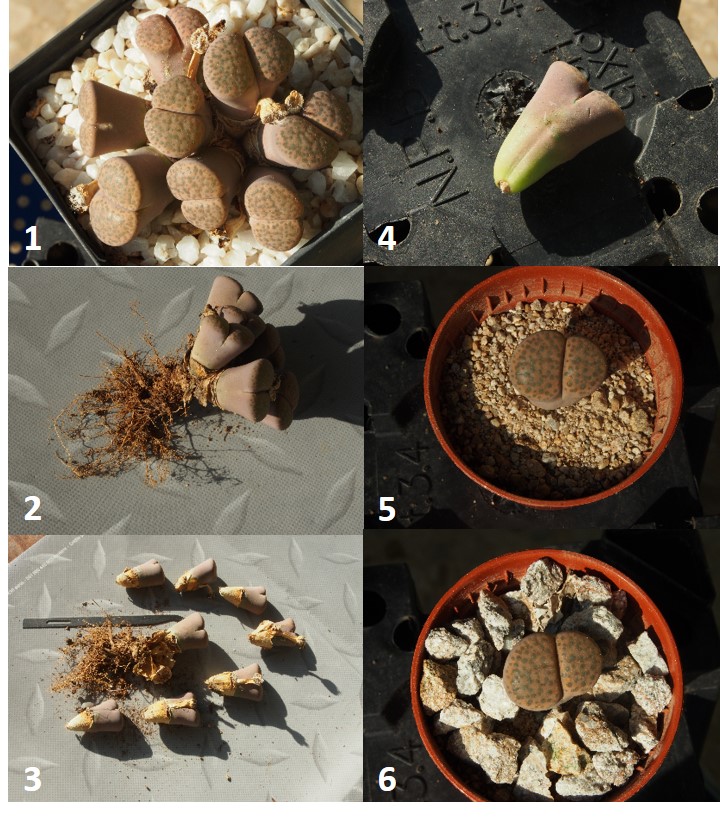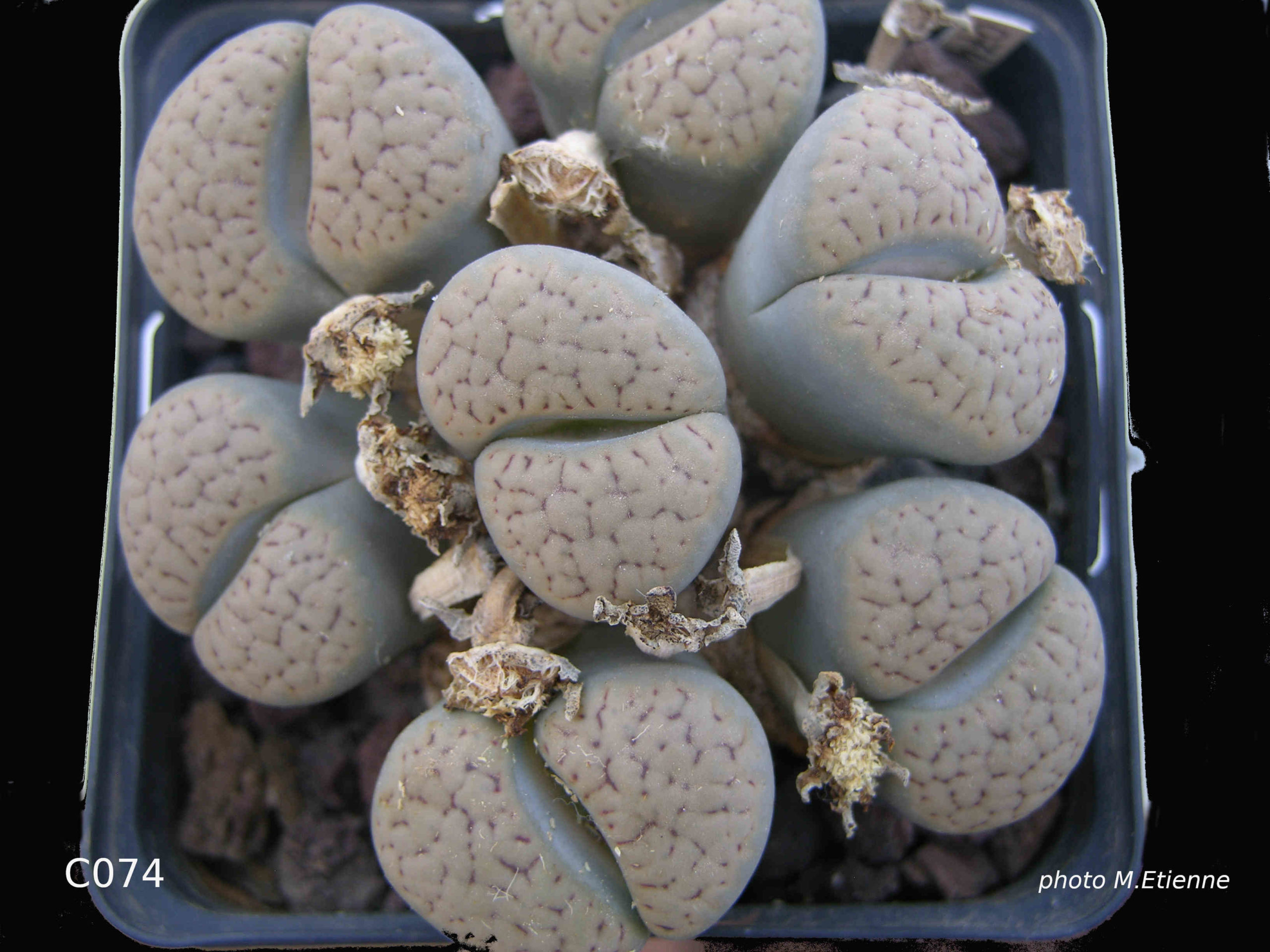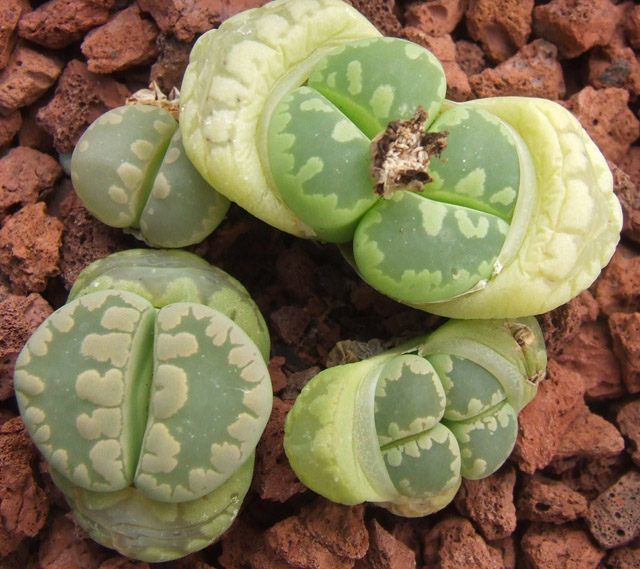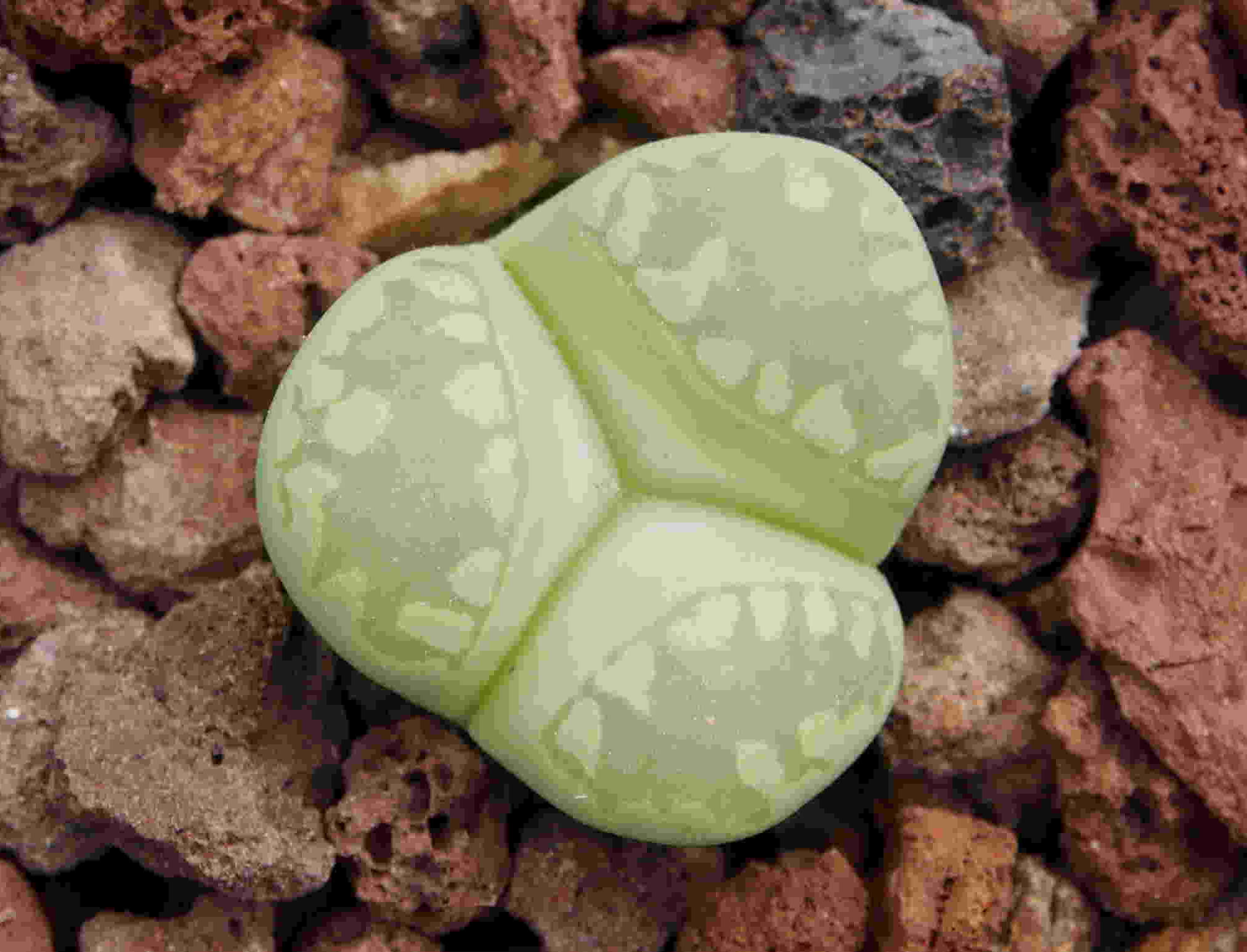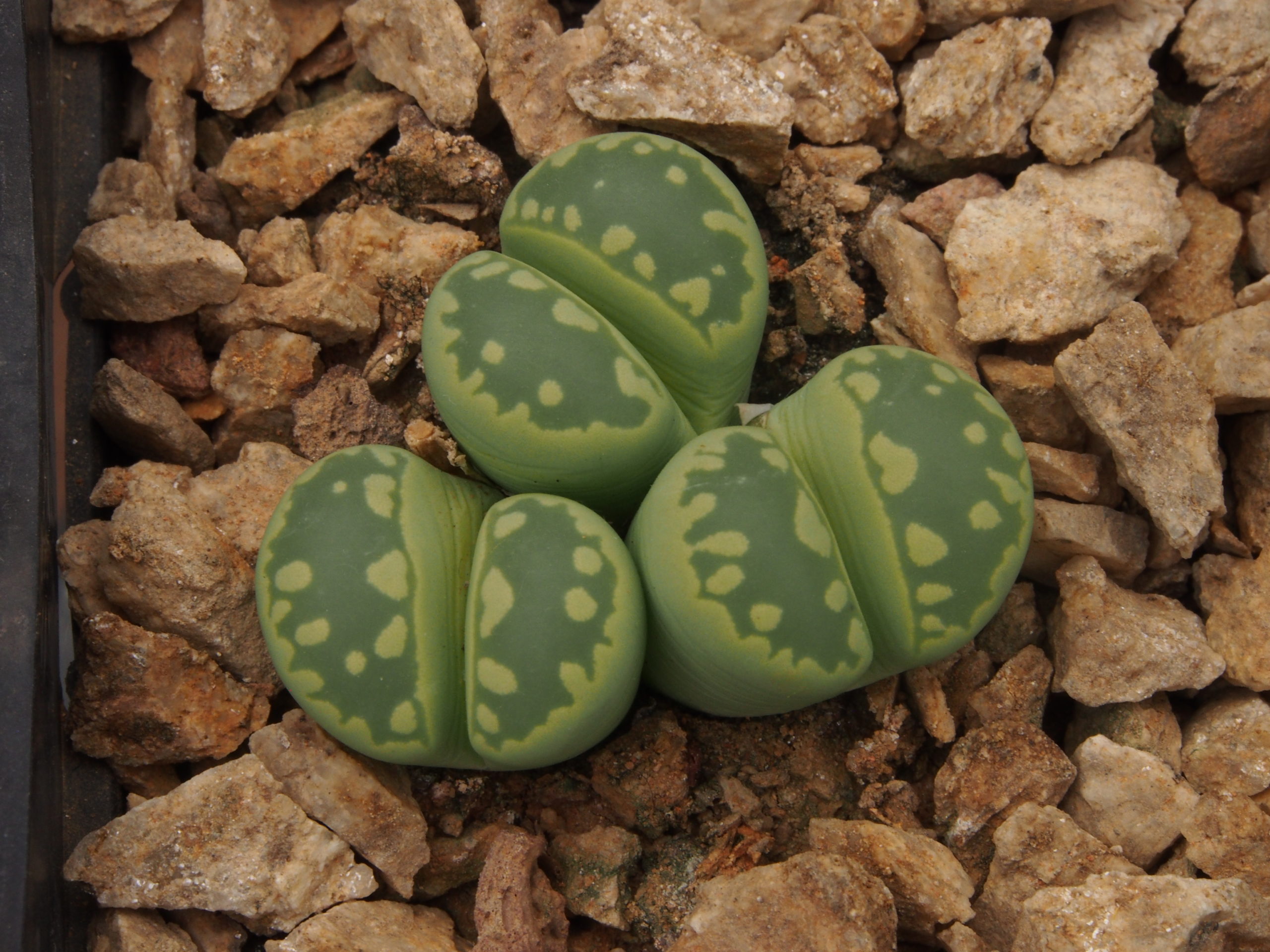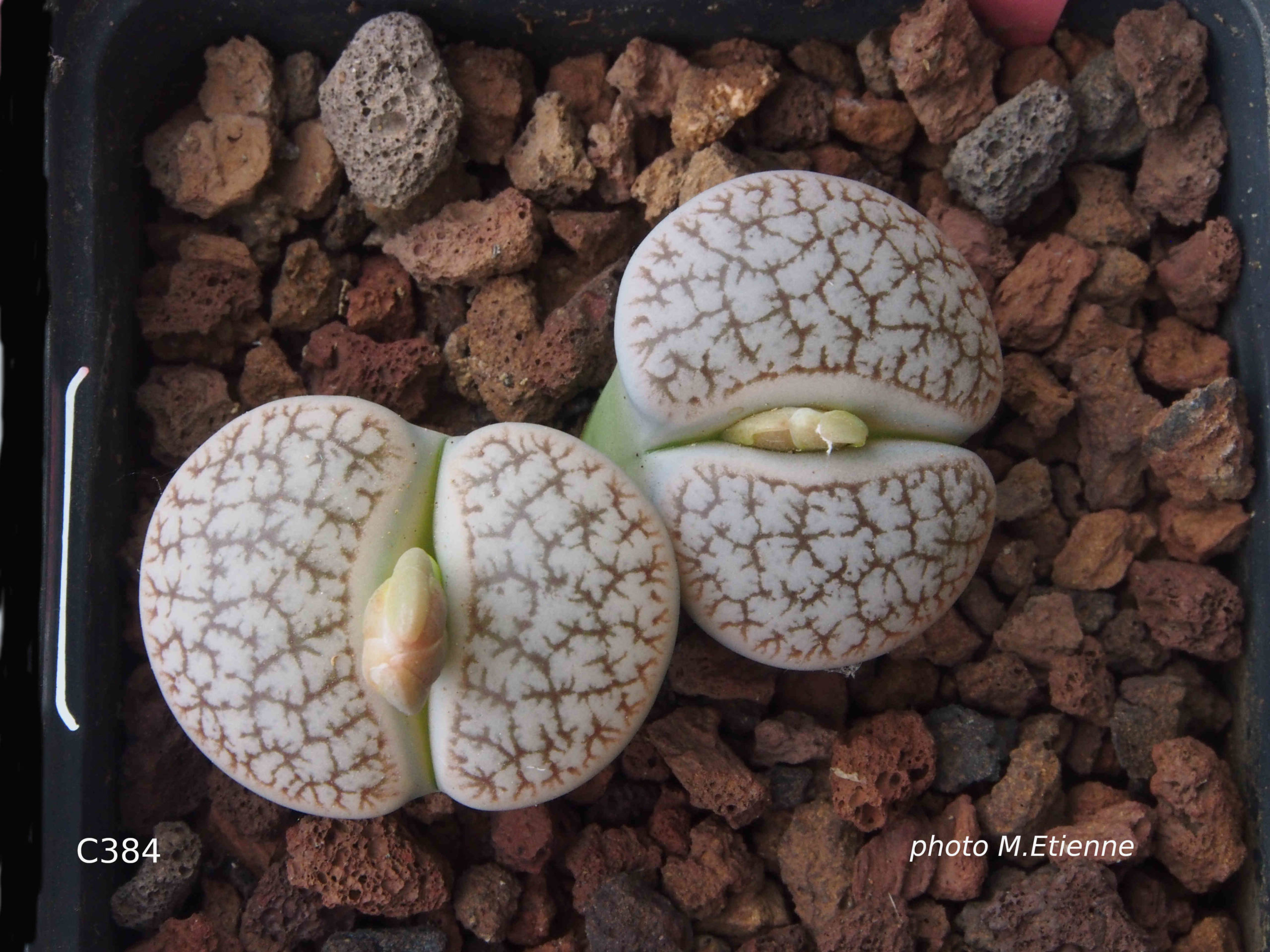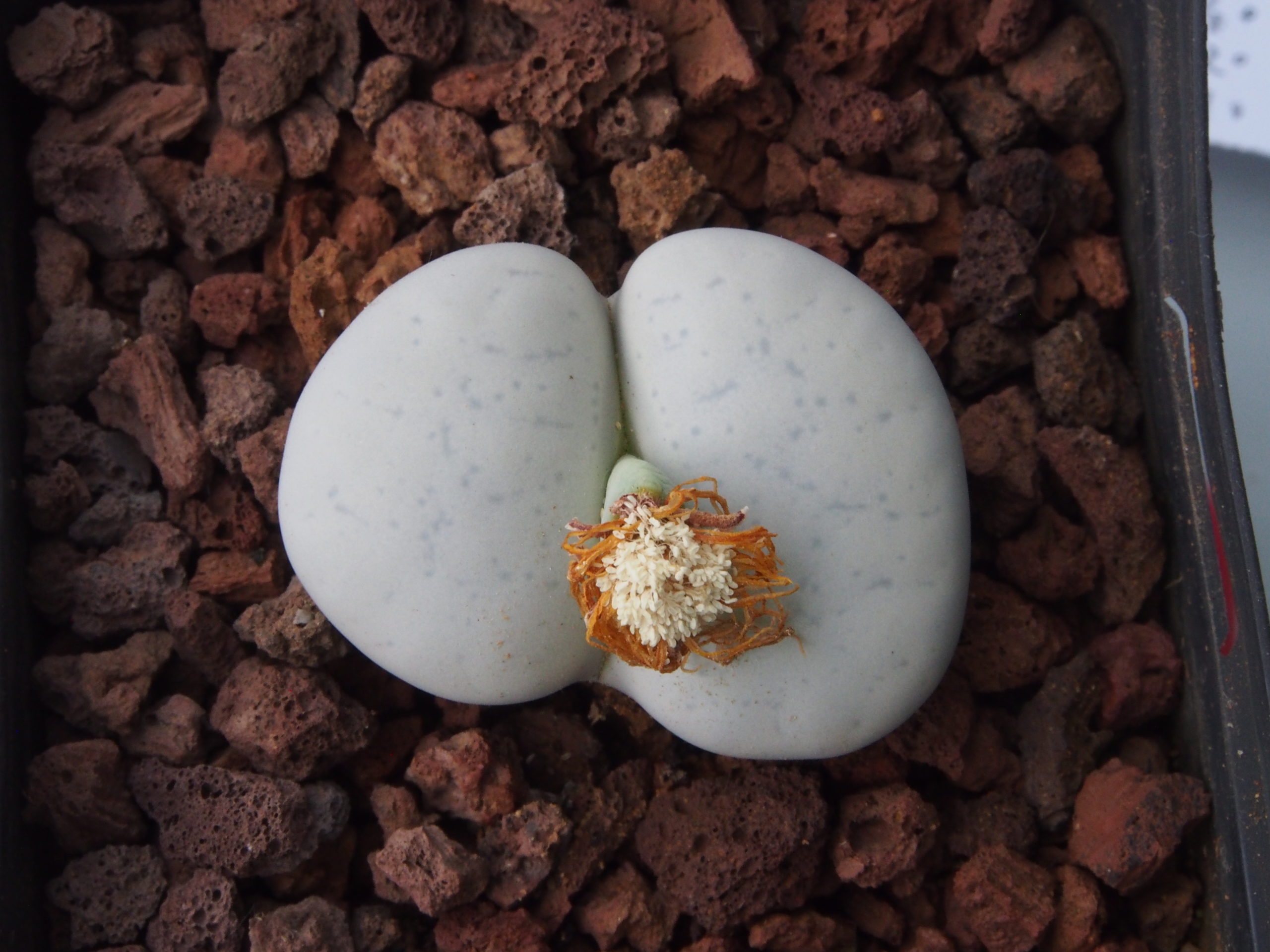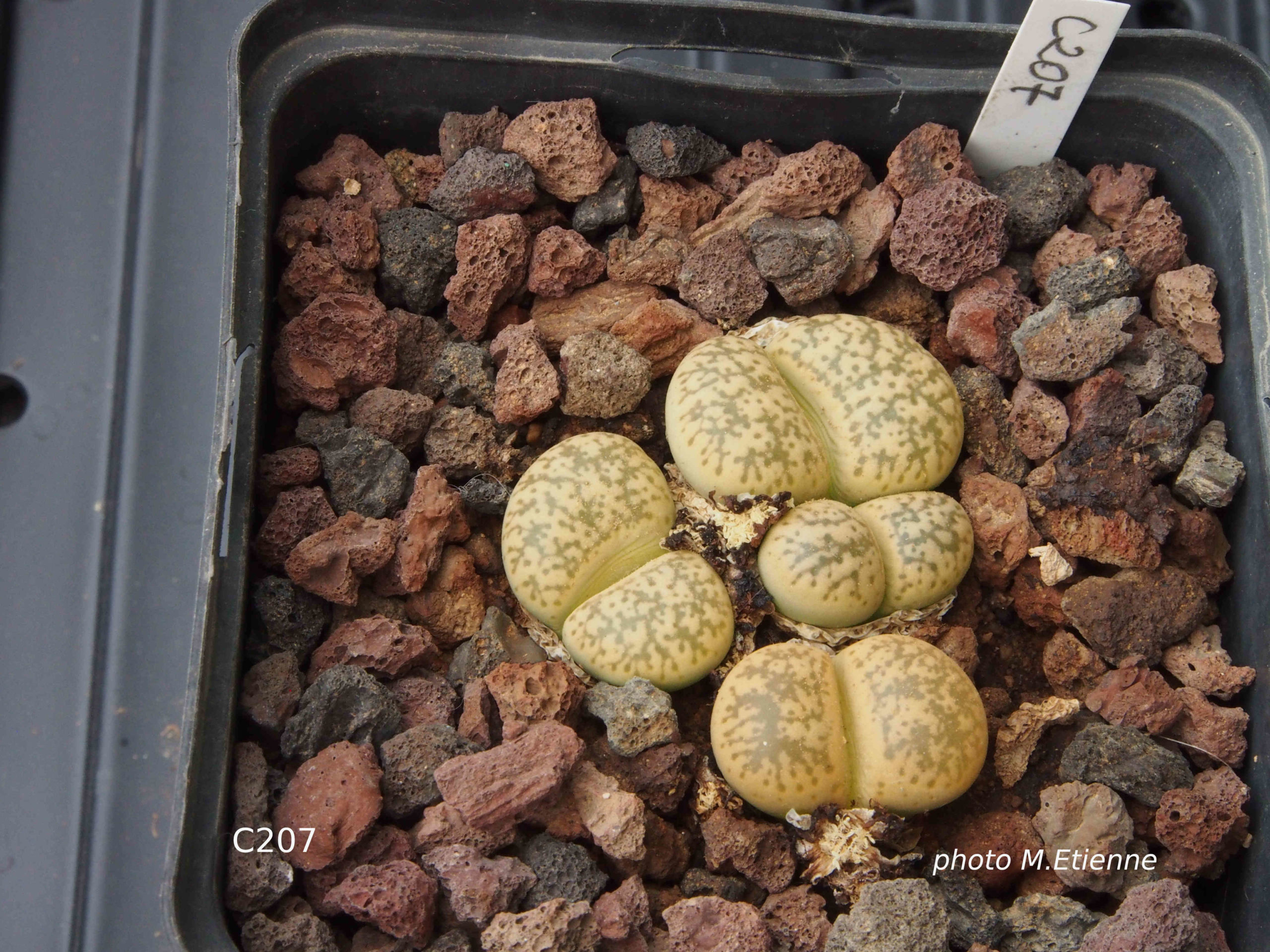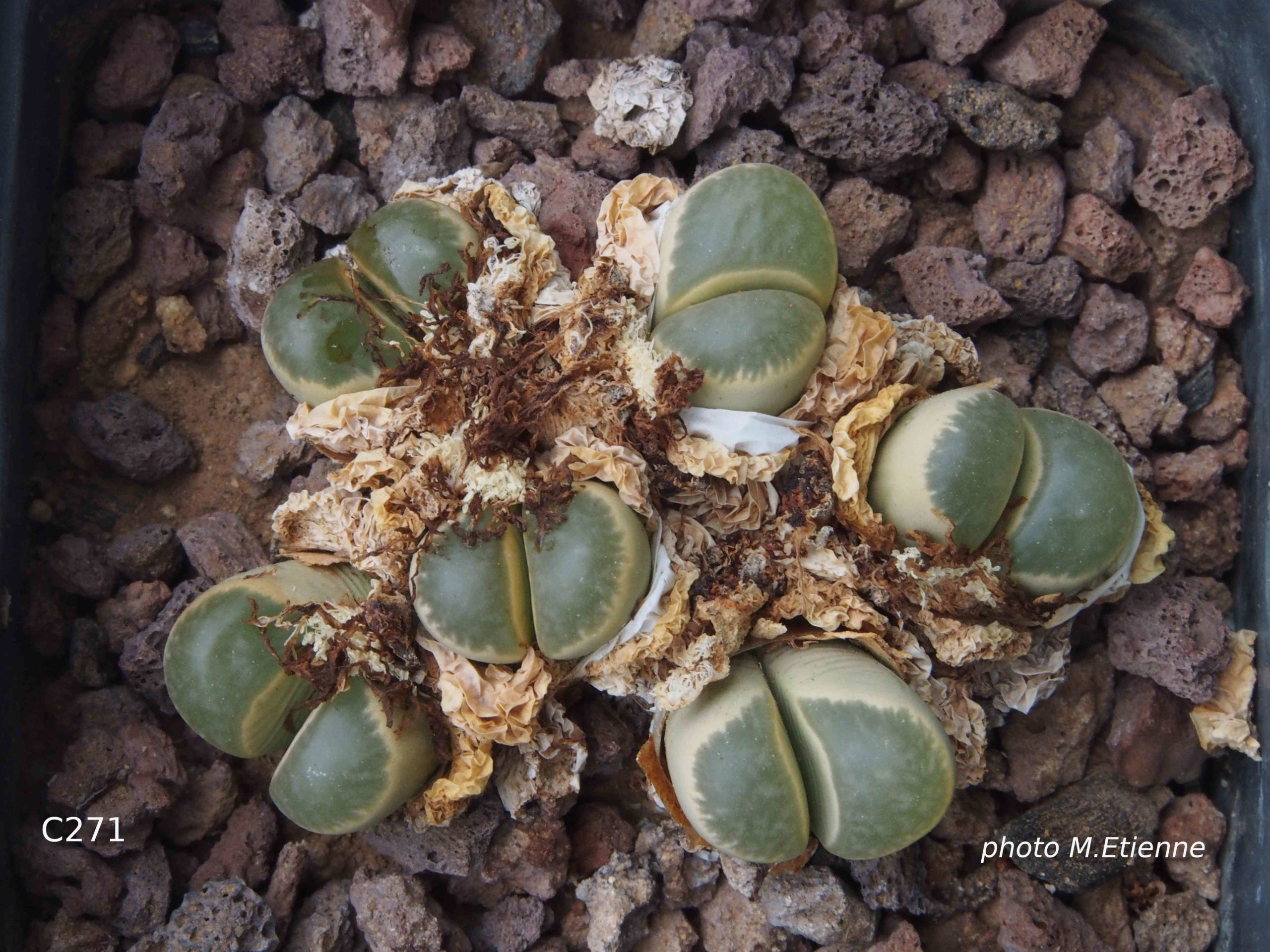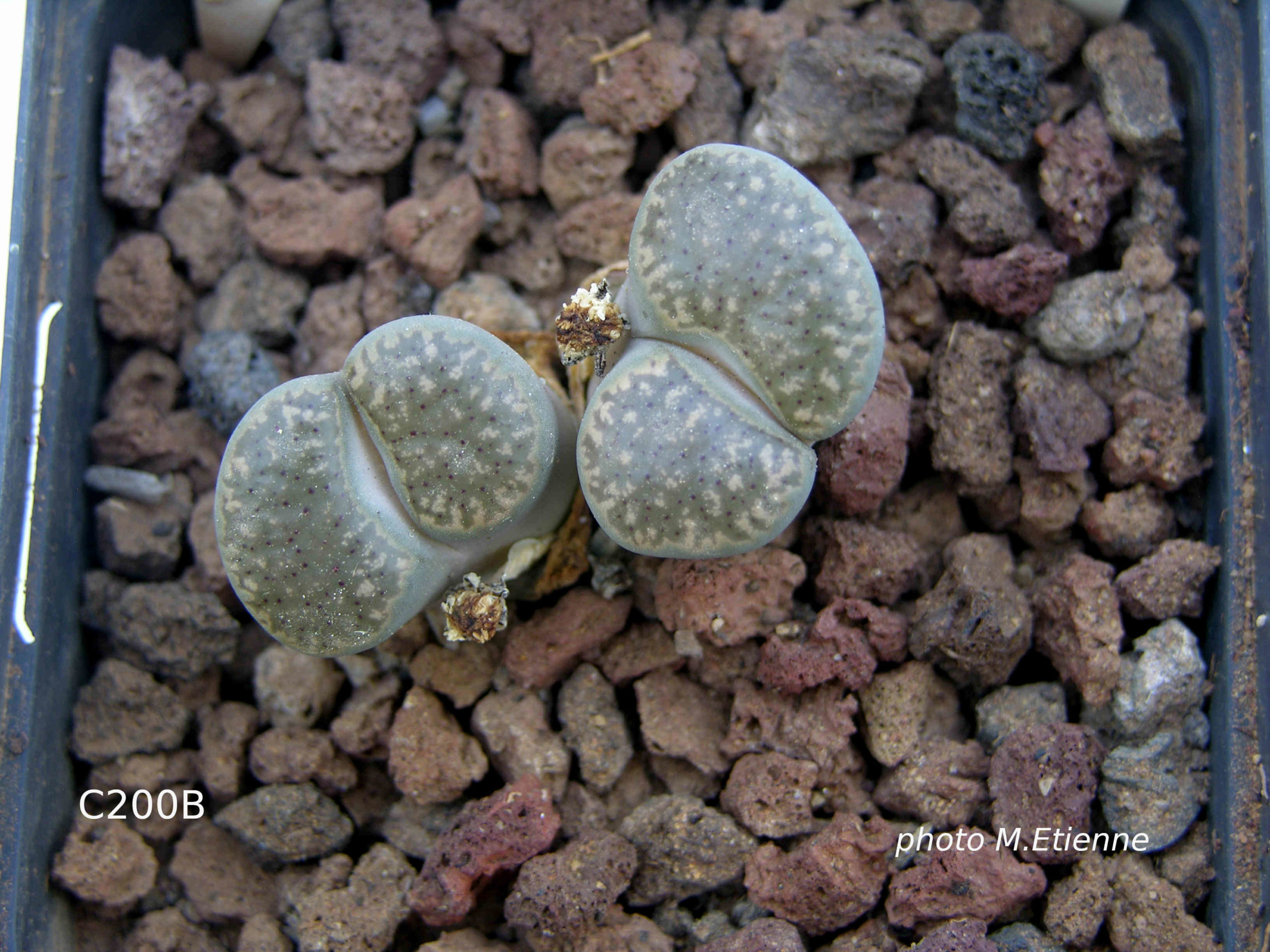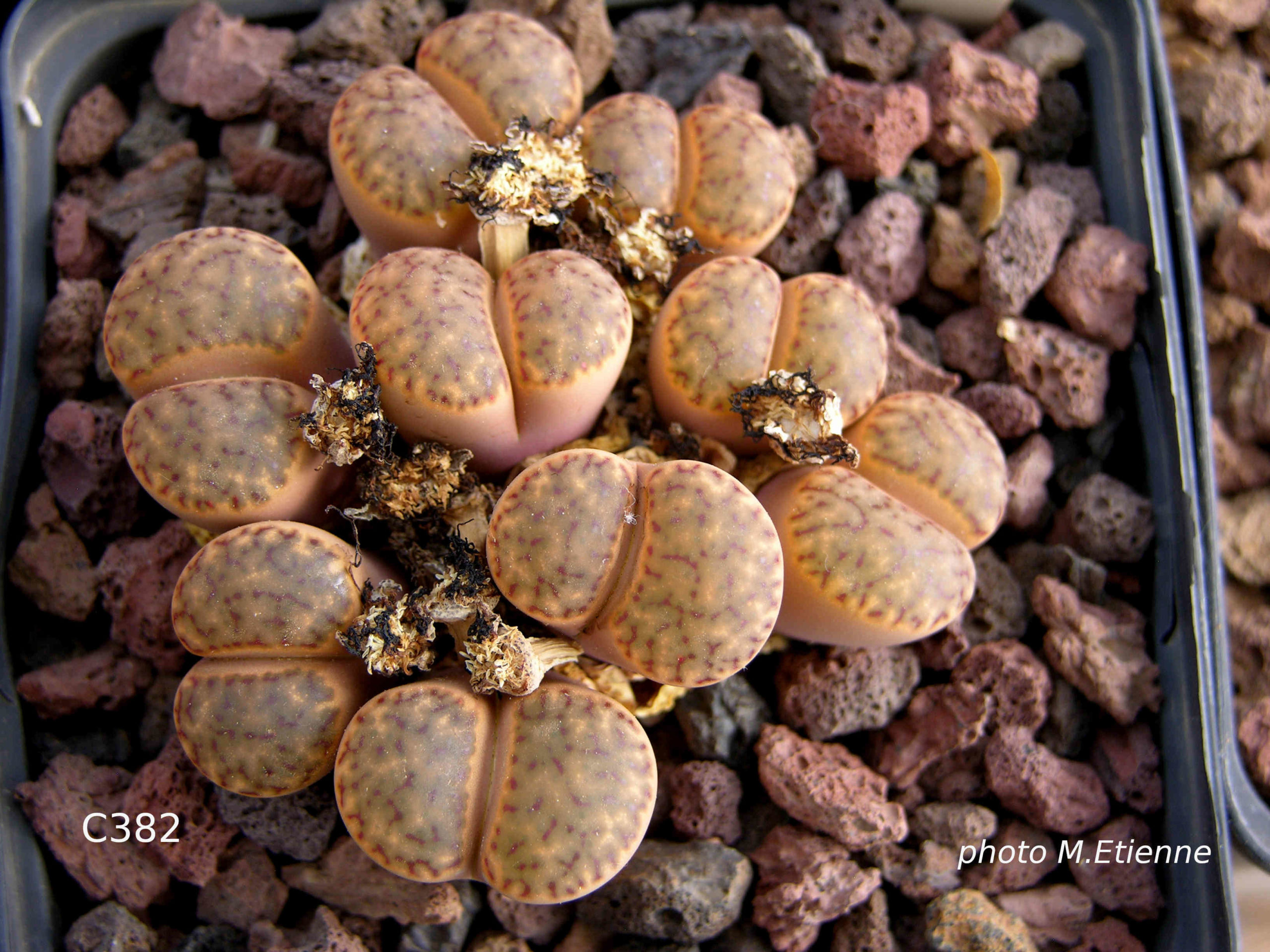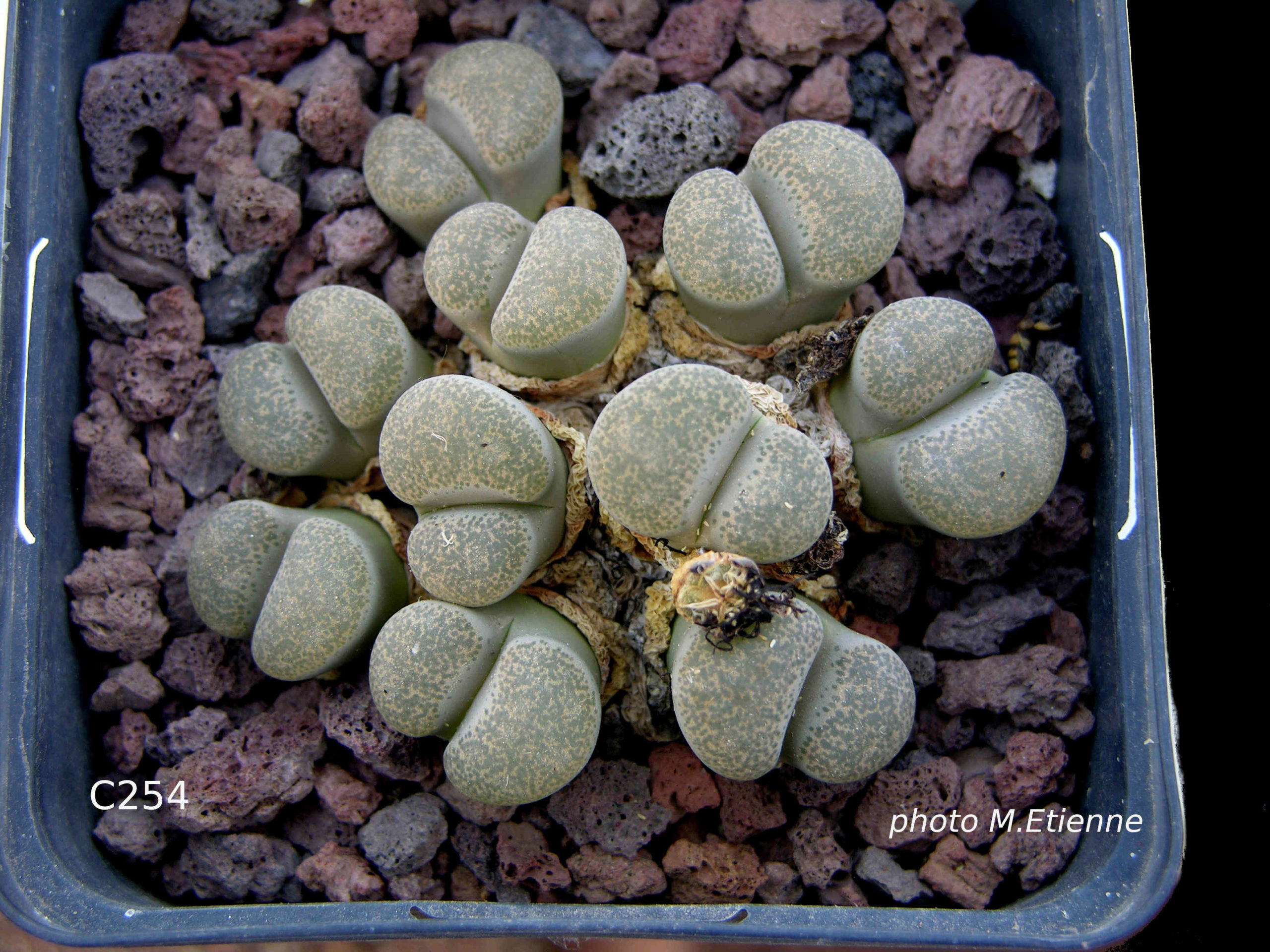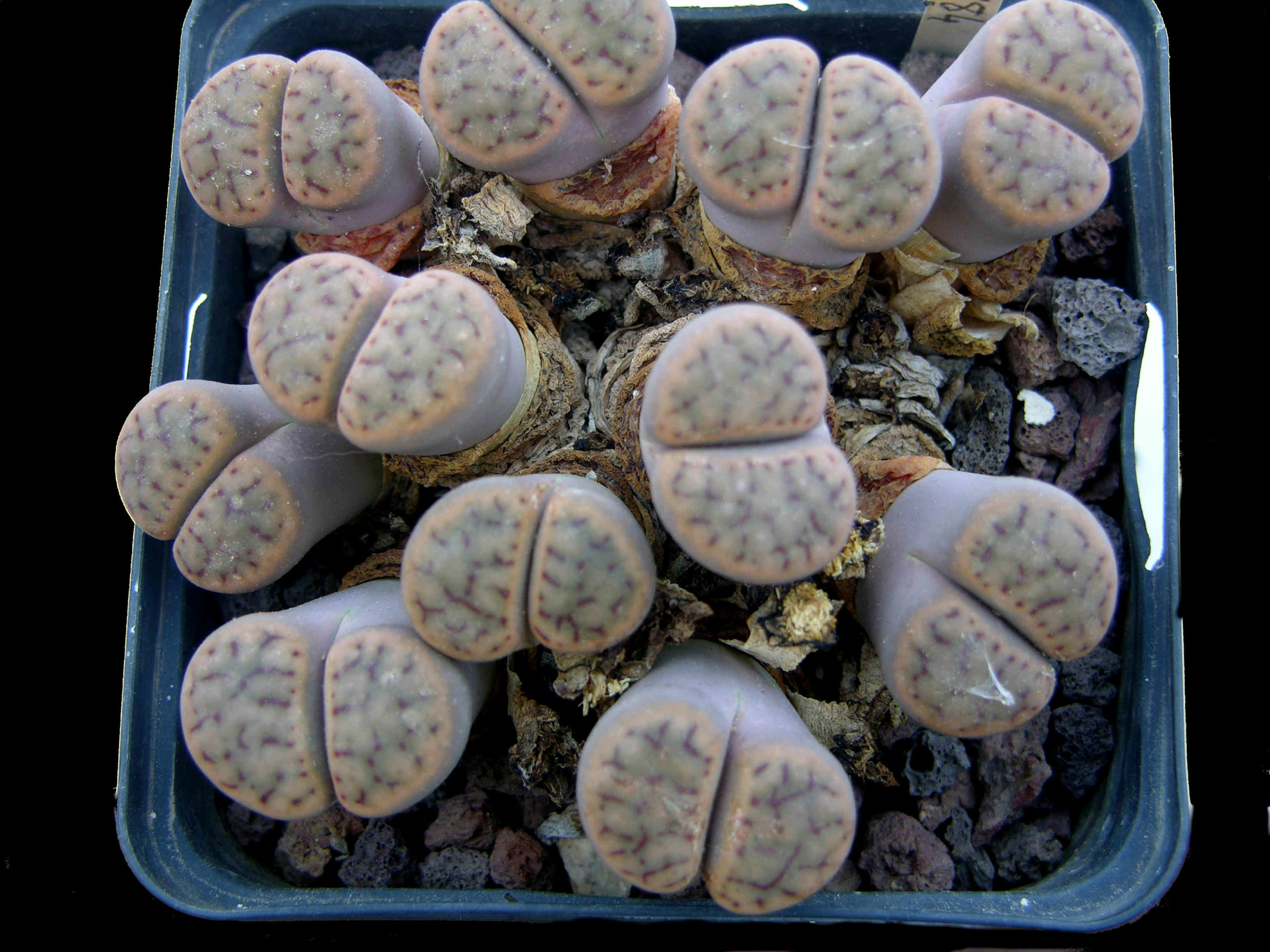Another way to multiply Lithops is to divide them. This is a technique I use when a plant starts to get cramped in its 9x9x10 cm pot (Lithops schwantesii in the photo on the left) or the plant takes on an aging appearance (Lithops werneri in the photo on the right). It should be noted that the different species of Lithops do not have the same ability to produce suckers and those that do do not do so at the same frequency … the reasons and factors behind this division remain unknown.
Indeed, all Lithops are characterized by the annual renewal of their leaves according to a process that usually takes place at the end of winter and that I inappropriately but pictorially call “moulting”. Usually, a pair of leaves will “give birth” to a new pair of leaves which will emerge orthogonally to the two old leaves. But some years, with a variable frequency according to the species, a pair of leaves will “give birth” to two pairs of leaves, thus generating a process of division which will gradually give the plant a multi-headed appearance. The photos show different types of moult in Lithops otzeniana: from left to right, a standard renewal (2 leaves give 2 leaves), a renewal with division (2 leaves give 4 leaves), a renewal with incomplete division (2 leaves give 3 leaves) ) and the “normal” evolution of the latter (3 leaves give 3 pairs of leaves).
Among the species particularly resistant to this process, we must mention Lithops gracilidelineata, Lithops hermetica, Lithops julii and certain varieties of Lithops pseudotruncatella such as dendritica, groendrayensis or volkii which produce at best 2 pairs of leaves at an advanced age. The three photos show 15-year-old plants of Lithops julii (left), Lithops pseudotruncatella var. dendritica (center) and Lithops pseudotruncatella var. volkii (right).
Other species will only divide at a late age or on very rare occasions (every 8-10 years), giving an old plant never showing more than 3 to 4 pairs of leaves. Lithops amicorum, Lithops coleorum, Lithops dinteri, Lithops vallis-mariae or Lithops verruculosa belong to this group. All three photos show 20-year-old plants of Lithops gesinae (left), Lithops helmutii (center) and Lithops verruculosa (right). Note the accumulation of old leaves in the photo of Lithops helmutii.
But the majority of lithops species divide regularly (every 4-5 years) and are able to produce plants with more than 8 pairs of leaves with age. Among the champions, we can mention Lithops bromfieldii, Lithops salicola, Lithops schwantesii, Lithops terricolor or Lithops werneri. The three photos show 15-year-old plants of Lithops bromfieldii with 9 pairs of leaves (left), Lithops terricolor with 10 pairs of leaves (center) and Lithops schwantesii with 11 pairs of leaves (right).
The series of 6 photos opposite illustrates the process to divide an old Lithops, here a 20-year-old Lithops terricolor C266. Once the cuttings are made, leave to rest for two weeks then water abundantly every 10 days. Cuttings take 2-3 months to root properly. After this period, the cutting should be repotted in a 7x7x8 cm pot with a suitable substrate.
1) initial state = 8 pairs of leaves
2) remove the entire substrate and let dry for an hour
3) Carefully separate each pair of leaves from the main root
4) rid each cutting of dry leaves and / or residual flower stalks
5) fill a 5.5 cm diameter pot with a very draining substrate (I only use granite arena) and insert the tip of the cutting into it
6) add half a centimeter of coarse gravel (5 to 7 mm) on the surface to keep the cutting straight. Insert label with name and field number.
